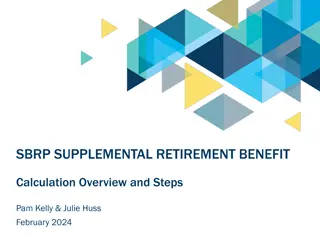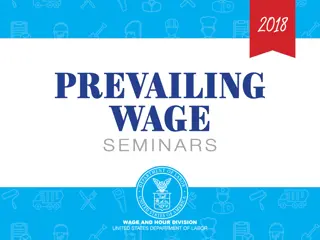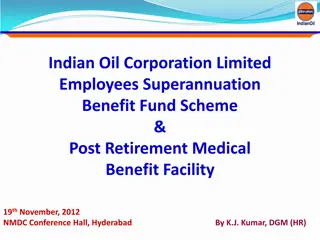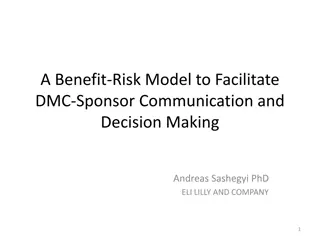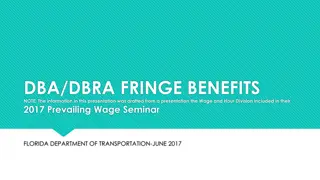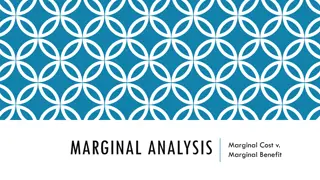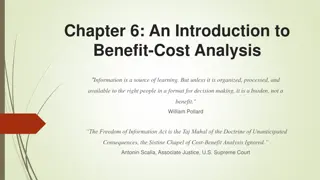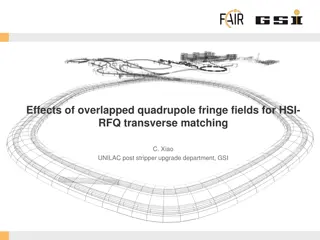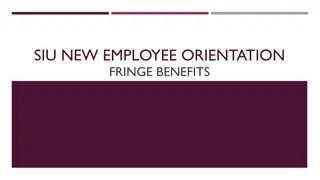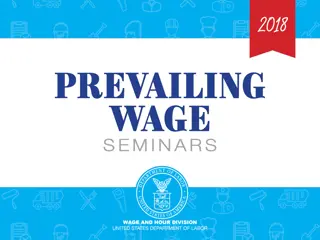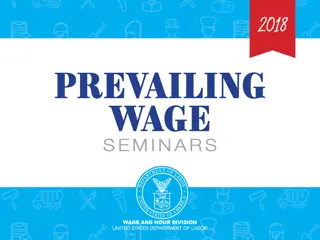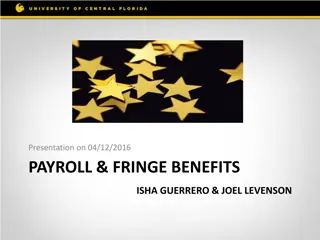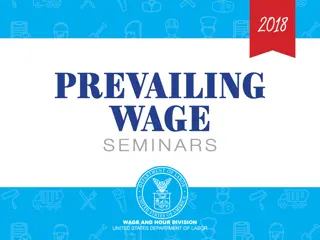
Fringe Benefits and Obligations in Contracting
Explore the world of fringe benefits in contracting, including funded and unfunded benefit plans, eligibility criteria, credit for contributions, and the annualization principle. Learn about the nuances of fringe benefits administration to ensure compliance with regulations and obligations.
Download Presentation

Please find below an Image/Link to download the presentation.
The content on the website is provided AS IS for your information and personal use only. It may not be sold, licensed, or shared on other websites without obtaining consent from the author. If you encounter any issues during the download, it is possible that the publisher has removed the file from their server.
You are allowed to download the files provided on this website for personal or commercial use, subject to the condition that they are used lawfully. All files are the property of their respective owners.
The content on the website is provided AS IS for your information and personal use only. It may not be sold, licensed, or shared on other websites without obtaining consent from the author.
E N D
Presentation Transcript
DBA/DBRA Fringe Benefits
Examples of Fringe Benefits Life Insurance; Health Insurance; Pension; Vacation; Holiday; and Sick Leave.
Funded Fringe Benefit Plans Contractors may take credit (without prior approval from DOL) for bona fide FB fund contributions made to third-party trustees or insurers that: Are irrevocably paid; and Are made regularly, not less often than quarterly. Credit is for payments made for individual workers eligible to participate in the plan, program, or fund.
Unfunded Fringe Benefit Plans Costs for an unfunded FB plan count towards WD obligation if specific criteria are met: The contributions reasonably anticipate the cost to provide a bona fide FB; Contributions are made pursuant to an enforceable commitment; That is carried out under a financially responsible plan; and The plan has been communicated in writing to affected workers. The plan has been approved by WHD
Eligibility and Participation Employers may not take credit for contributions for employees who are not eligible to participate in the fringe benefit plan. Employers may take credit for contributions made on behalf of employees who will likely become participants in a plan but are not yet eligible to receive benefits (for example, a health insurance plan with a 30 day waiting period for new participants)
Administrative Expenses The administrative expenses incurred by a contractor or subcontractor in connection with the administration of a bona fide fringe benefit plan are not creditable towards the prevailing wage under the DBA.
Annualization Principle Davis-Bacon credit is based on the effective annual rate of contributions for all hours worked in a year (both Davis-Bacon and non-Davis-Bacon work). Davis-Bacon work may not be used as the exclusive or disproportionate source of funding for a benefit in effect during both covered and non-covered work.
Annualization Computing the creditable hourly rate Determine the hourly rate of contribution that is creditable towards a contractor s Davis-Bacon prevailing wage obligation by: Dividing the total annual contributions by the total annual hours worked (both Davis-Bacon and non-Davis-Bacon work).
Annualization Exception Certain Defined Contribution Pension Plans An exception to annualization applies to: Defined contribution pension plans that provide: immediate participation; and essentially immediate vesting (100% vesting after an employee works 500 or fewer hours). This exception allows full credit for the amount of contributions made on Davis-Bacon work.
Annualization Example 1 Pension Plan with 5-Year Vesting Schedule This pension plan does not provide for immediate or essentially immediate vesting. A contractor who wishes to receive a $2 per hour credit for contributions, must: Contribute at that rate for all hours worked during the year; or Make regular contributions at least quarterly that would result in a $2 average contribution to the plan based on all hours worked in the year.
Annualization Example 2 Defined Contribution Pension Plan A firm s contribution for an employee s pension plan that does not provide for immediate vesting was computed at $2,000 a year. The employee worked 1,500 hours on a Davis-Bacon project and 500 hours on other jobs not Davis-Bacon covered. Credit per hour: $2,000 / 2000 (hours) = $1.00
Computing hourly fringe benefit equivalents creditable for contributions made weekly, monthly, quarterly, etc. In determining cash equivalent credit for fringe benefit payments, the period of time to be used is the period covered by the contribution. If contributions are made weekly, cash equivalents should be computed weekly. If contributions are made quarterly, cash equivalents should be computed quarterly, etc.
Computing the Hourly Equivalent Fringe Benefit Credit Medical Insurance Employer provides medical insurance at $200 per month to an electrician on a Davis-Bacon project. The WD requires $16.00 plus $2.50 in FB s, or $18.50 an hour. Employee works 160 hours a month $200/160 hours = $1.25 credit per hour for the FB No other benefit provided Electrician is due: $17.25 in cash wages per hour ($18.50 - $1.25 = $17.25)
Fringe Benefit Payments in Advance converting to hourly cash equivalents Where the contractor pays monthly health insurance premiums in advance on a lump sum basis, the total hours worked in the previous month or in the same month in the previous year may be used to determine (i.e. estimate) the hourly equivalent credit per employee during the current month. Any representative period may be used, provided the period selected is reasonable. However, keep in mind that If the employer contributes at different rates, such as under a health insurance plan for single and family plan members, credit cannot be taken based on an across the board average, but rather must be computed to reflect the cash equivalent to be credited for each individual employee.
Fringe Benefit Payments in Advance converting to hourly cash equivalents On occasion, a contractor may offset the annual cost of a particular fringe benefit by converting such costs to an hourly cash equivalent Since construction workers often do not work a full year (2,080 hours), if a contractor makes annual payments in advance to cover the coming year cost, and actual hours worked will not be determinable until year-end, total hours worked by DB-covered workers in the preceding year (or plan year) can be considered representative of a normal work year in the computation. Example: Assume total annual cost of pension program is $15,000, and that the total working hours (DB and non-DB) for the workers on whose behalf the employer made contributions in the previous year was 15,000. $15,000/15,000 hours = $1.00 per hour cash equivalent
Disclaimer This presentation is intended as general information only and does not carry the force of legal opinion. The Department of Labor is providing this information as a public service. This information and related materials are presented to give the public access to information on Department of Labor programs. You should be aware that, while we try to keep the information timely and accurate, there will often be a delay between official publications of the materials and the modification of these pages. Therefore, we make no express or implied guarantees. The Federal Register and the Code of Federal Regulations remain the official source for regulatory information published by the Department of Labor. We will make every effort to keep this information current and to correct errors brought to our attention.

